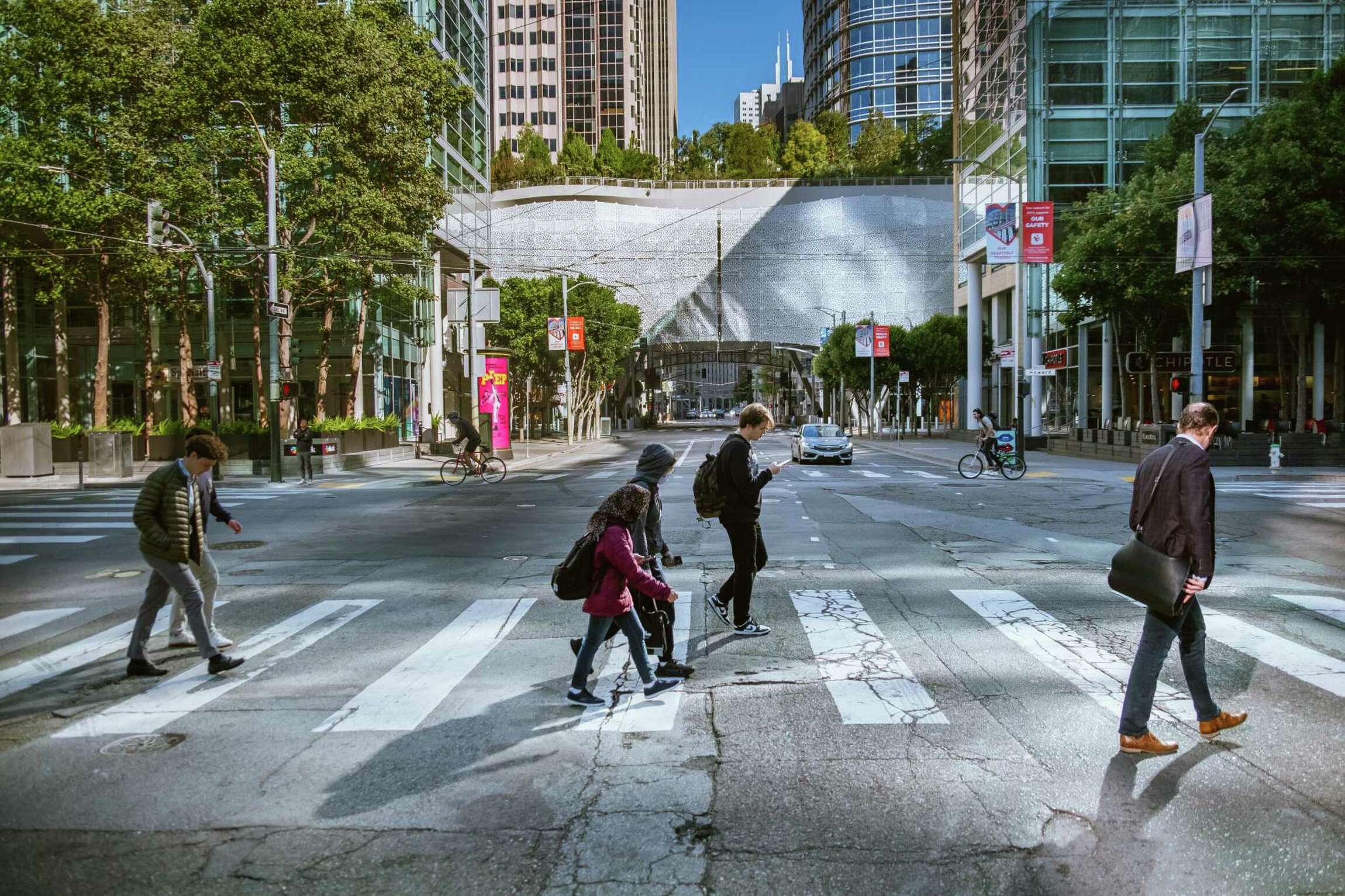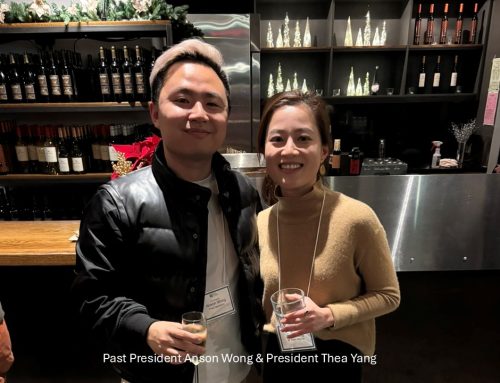by John King
The very name is a corporate branding exercise. Your contemplation of serene landscapes can be shattered by tech bros striding by in loud conversation. There are a lot of people in yellow windbreakers wearing caps that say “SECURITY.”
I acknowledge all this in advance, as well as the weirdness of a 5.4-acre size public park 70 feet in the air. None of which changes one basic fact: Salesforce Park, the rooftop area above San Francisco’s 4-year-old transit center, keeps getting better with age.
The elongated, oval greenspace is a semi-natural wonder, thick with 280 species of trees and plants arranged into 12 distinct gardens. There are nooks and crannies where you can gather with friends or relax in isolation. Despite office towers on all sides, the people you encounter are a mix of ages and economic backgrounds. In other words, it’s a constant joy in a part of the city that has needed all the help it can get since the pandemic arrived.
For those of you who haven’t stopped by the transit center — with its web-like, white metal skin that extends from Beale Street almost three blocks to the west, with alleys on either side — here’s a thumbnail history.
The idea dates to 2001, when the Transbay Joint Powers Authority was formed to replace the aged existing terminal with a new facility that would welcome East Bay commuter buses while also having underground platforms where passenger trains from the peninsula could pull in. By the time design work began in 2007, high-speed rail from Los Angeles had been added to the desired mix.
I’ll leave out all the drama along the way, but the center finally opened in 2018 — and then closed for 10 months because two cracked structural girders were spotted by a worker. The $1.6 billion price tag had climbed to $2.259 billion. The second phase, with its rail service, was in limbo.
To help cover operating costs, the authority cut a $110 million, 25-year sponsorship deal with Salesforce. The homegrown tech firm helps pay for things like security and, in return, the facility is now officially called Salesforce Transit Center (sigh), with Salesforce Park on top (double sigh).
Given this back story, the park has received its share of brickbats. New Yorker writer Anna Weiner in 2019 characterized the “rooftop arcadia” as “expensive, sponsored, and surveilled.” This July, Andrew Chamings in our sister publication SFGATE dismissed it as a “sanitized Teletubby garden.”
Chamings’ column was fueled by a legitimate gripe — an overscaled rooftop cafe space that shouldn’t be there in the first place (another bid for extra revenue) has a tenant that now intends to sell memberships with fees as high as $300,000 — not a typo! — for “curated” experiences, though the Japanese restaurant that’s planned will be open to all.
But good things in a big city often have flawed aspects if you look close. And with the local tech world such an easy target for snark and scorn, no wonder the lush rooftop suffers collateral damage.
So what makes the park enticing, and in ever more satisfying ways? For starters:
• It’s immersive. From day one, despite cost cutting elsewhere in the huge project, the landscape with its procession of gardens was a knockout. The transit authority never skimped on the range of plantings, from ordinary to exotic, or the sizes of what went into the ground.
“We wanted it to feel like a park on opening day, not a roof deck,” says Adam Greenspan of Peter Walker & Partners, the landscape architecture firm that conceived the space, working with Pelli Clarke Pelli architects.
That was in 2018. Now there are stretches where the trees close in above you, such as the segment above Fremont Street where strawberry trees with their smooth orangey trunks reach over the walkway and meet the European hornbeam across the way. Wonderful.
• There’s variety. My favorite spot in some ways is the “wetland garden” at the east end, organized around two circular trios of birch trees ringed by golden granite seating. Plus one surrealistic plant choice for a seasonal hedge — “Gunnera Manicata,” a.k.a dinosaur food, which gets cut back to the ground in winter but in summer has individual leaves five feet wide. Trippy.
• Not everyone is a techie. Visit on weekends and prepare to encounter an abundance of families. During the week there are toddler playtimes; the one I walked by last Tuesday was accompanied by 27 parked strollers, with the target audience crawling or careening in all directions.
At other times during the week, adults sit by themselves reading books. Older people walk laps, safely removed from traffic below. Newish nearby buildings include residential ones reserved for low-income seniors and families — and for that population, this is their neighborhood park.
• The best is yet to come. Eateries are slowly opening along the alleyways, another small hint of downtown San Francisco’s fitful return. Authority officials hope to receive full funding next year for the $5 billion or so needed to expand high-speed rail and Caltrain into the massive concrete shell that was built a decade ago beneath the center’s main hall. I also see more people in the park — and the more people who find their way up to the gardens, the more the overt security presence is diluted.
As for the name, the original plan was to call it simply City Park. As an indication of what this place could be, that still seems like an appropriate choice. READ the article at SF Chronicle.





